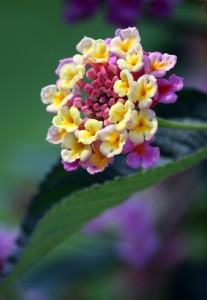When discussing plant choices, you’ll have the option to choose between both native plants and non-native plants in your landscape design. By “native,” we are talking about plants that are native to California – possibly even the Greater Sacramento area.
Non-native plants are any plants that originated somewhere else in the world, that would not otherwise have been introduced to this area of California without intervention. In some cases these plants can be excellent for your landscape. In other cases, these plants may be problematic. The following are just a few of the potential advantages and disadvantages to using plants not native Northern California.
Benefits of Non-Native Plants
Native plants get a lot of publicity in the landscaping world. But non-native plants have their place as well. The following are some of the benefits of non-native plant species.
- Far Greater Variety – You have a vision. That vision may involve a specific type of plant, whether it be the color, size, shape, etc. When you’re looking only at native plants you’re limited by what has grown in the area. But when you consider non-native plants, you have every plant known to mankind at your disposal. While not every plant is capable of growing in the Sac soil or environment, at least you have the opportunity to choose from a huge selection.
- Wow Factor – Similarly, landscapes are about making your home more visually impressive, and with non-native plants you can find something that gives your landscape the “wow” factor – something that makes onlookers go “I’ve never seen anything like that before.” Whether it’s color combinations, size, shape, or something else, the “wow” factor is what makes a property stand out, and helps give it more value.
- Resistant to Diseases – In some cases, non-native plants may be more prone to disease or even bring disease. But they may also be more resistant to NATIVE diseases, which are often geared towards local plants. The tradeoff can be nice if you live in an area that seems to have a lot of diseases attacking local plants.
- Similar Upkeep – Though the upkeep of native plants tend to be similar, you can often find non-native plants that require similar or less upkeep. So you’re expanding your range of options without necessarily adding extra work on your part. Also, never forget the joy you may experience from growing and maintaining a non-native plant, especially in a garden.
Non-native plants are very advantageous from a landscaping perspective, and though they have their flaws they should always be something you consider.
Weaknesses of Non-Native Plants
That said, there is a reason that going native tends to be the landscaping preference. Non-native plants have several drawbacks that include:
- More Upkeep – Native plants have adapted for the environment. Non-native plants have not. While some plants, like cacti, can withstand almost any environment and are great imported plants, others need a lot more upkeep than Sacramento is able to provide naturally, which means more water on your part (during the drought) and more work keeping them alive.
- More Cost – Some non-native plants are cheaper, but most of the most interesting ones are not and need to be imported at what could be high costs. They are not always available either, so you do have to be willing to splurge for a bit more if you’re going to go with a non-native plant in your landscape.
- Less Environmental Benefit – Again, there are some great plants for the environment and some less great plants, but overall the non-native plants tend to be a bit worse for the local environments. Just as some are more resistant to local diseases, so too are some more prone to them or bring disease that affect native plants. They may also be invasive and fight off some native plants and/or may not attract the butterflies and wildlife in the area the way native plants will.
None of this is meant to imply you should avoid non-native plants. Quite the contrary, we regularly work with non-native plants and many homeowners are ecstatic with the results. No costs, upkeep, or rare environmental drawbacks are going to affect you that often, and there are still many benefits to the non-native plants as well. Indeed, many of the plants and insects people think are native today were actually introduced to the United States hundreds of years ago.
The only thing to keep in mind is whether or not there are native plants that meet your needs, and if so considering those plants first. They’ll keep costs down, may be easier to care for, and are valuable for the Sacramento environment. Then, if there are no native plants that meet your needs, contact your landscaper and see what they recommend in non-natives.



